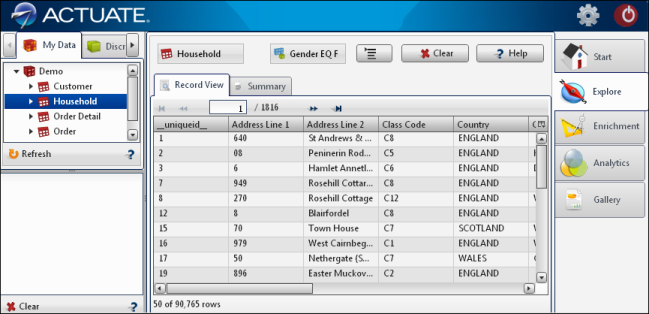To demonstrate changing table resolution, modify the second example from the preceding section in the following way. Drag the Female value from Discrete Values and drop it in Record View of Data Explorer. You see complete records for 102,042 female customers. Choose My Data, then replace Customer with Household. To do this task, drag Household from My Data and drop it on Customer in Data Explorer. 90,765 records that represent households having one or more female customers appear in Record View, as shown in Figure 2-10.
|
Figure 2-10
|

